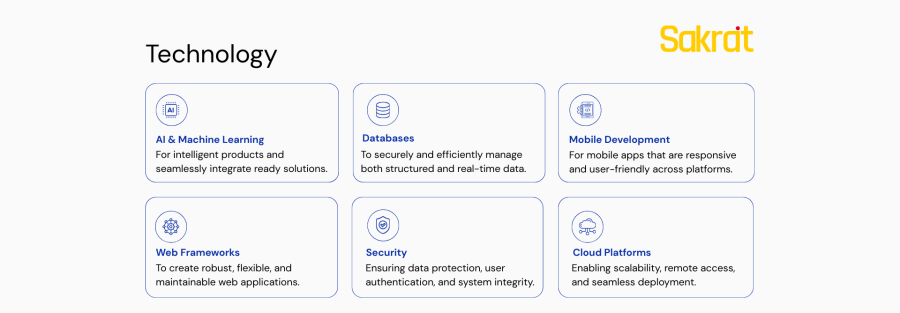RPA vs Agentic AI: Which Automation Strategy is Right for Your Business?
In the relentless pursuit of efficiency, businesses are flooded with automation technologies. Two terms that are often used interchangeably yet represent fundamentally different approaches are Robotic Process Automation (RPA) and Agentic AI.
Understanding the distinction is critical. Choosing the wrong strategy can lead to costly implementation failures, while the right approach can unlock unprecedented productivity and innovation. This guide will break down the core differences between these two powerful technologies and help you decide which is the right fit for your business needs.
The Core Difference: Instruction vs Intention
The fundamental difference between RPA vs Agentic AI lies in how they operate:
- RPA follows strict instructions. It is a digital “macro on steroids” that mimics human interactions with digital systems to execute a predefined, rule-based script. It is deterministic, rigid, and exceptional at high-volume, repetitive tasks.
- Agentic AI operates on intent. You give it a goal, and it uses reasoning, learning, and adaptability to figure out the best way to achieve it. It is dynamic, autonomous, and designed to handle complexity and unpredictability.
Think of it this way: RPA is like a train on a fixed track, perfectly efficient as long as the track is clear. Agentic AI is like a self-driving car, capable of navigating traffic, detours, and unexpected obstacles to reach its destination.
Comparison Breakdown: RPA vs Agentic AI
| Feature | Robotic Process Automation (RPA) | Agentic AI |
| Core Function | Executes pre-programmed, rule-based tasks. | Pursues goals autonomously using reasoning and learning. |
| Adaptability | Fragile. Minor UI changes can break the script, requiring manual updates. | Resilient. Adapts to new information and system changes in real time. |
| Decision-Making | None. Follows a rigid, hardcoded “if-then” logic. | Makes independent, data-driven decisions to solve complex problems. |
| Data Handling | Requires structured, predictable data (e.g., spreadsheets, forms). | Excels at handling unstructured, ambiguous data (e.g., emails, PDFs, images). |
| Best For | High-volume, repetitive, and stable processes like data entry or invoice processing. | Complex, dynamic workflows that require judgment and adaptation, such as risk assessment or supply chain optimization. |
| Implementation | Faster and lower initial cost. Ideal for automating legacy systems. | Slower implementation with a higher initial investment, but greater long-term ROI. |
When to Use RPA: The Power of Repetition
RPA is the undisputed champion of stable, high-volume, rule-based work. It shines in scenarios where the process does not change and efficiency is paramount.
Use RPA for:
- Invoice Processing: An RPA bot can monitor an inbox, extract structured data from invoices, validate it against a purchase order, and enter it into your accounting system.
- Employee Onboarding: Automating the creation of user accounts, sending welcome emails, and enrolling new hires in standard benefit programs.
- Data Migration: Moving large volumes of structured data from one system to another, a task that is tedious and prone to human error.
If your process can be mapped out in a simple flowchart with no exceptions, RPA is a cost-effective and powerful solution.
When to Use Agentic AI: The Power of Adaptability
Agentic AI thrives where RPA fails: in dynamic environments that require judgment, context, and learning. It is built for complex problems, not just simple tasks.
Use Agentic AI for:
- Insurance Claims Assessment: A customer uploads photos of a damaged car. The Agentic AI analyzes the unstructured images, estimates the repair cost, checks for fraud indicators, and can even approve the claim without human intervention.
- Supply Chain Management: An agent can monitor global shipping routes, weather patterns, and geopolitical news. If a disruption occurs, it can autonomously re-route shipments and notify stakeholders, a task far beyond RPA’s capabilities.
- Customer Support: An agent can analyze the sentiment of a customer’s email, review their entire history with the company, and provide a personalized, contextual solution, escalating to a human only when necessary.
If your process involves unstructured data, complex decision-making, or a constantly changing environment, Agentic AI is the strategic choice.
The Best Strategy: A Hybrid Approach
The “RPA vs Agentic AI” debate presents a false choice. The most advanced enterprises are discovering that these technologies are complementary, not competitive. The future of automation is a hybrid model where RPA and Agentic AI work in concert.
In this model:
- RPA bots handle the “grunt work”: They perform the high-volume, repetitive data gathering and entry tasks.
- Agentic AI acts as the “brain”: It takes the data from RPA, analyzes it, makes complex decisions, and orchestrates the end-to-end workflow, even managing the RPA bots themselves.
By combining the raw efficiency of RPA with the intelligent adaptability of Agentic AI, businesses can create a powerful, resilient, and scalable automation ecosystem that delivers the best of both worlds.


